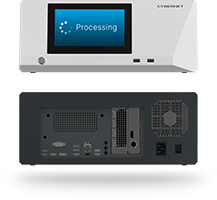Generative artificial intelligence has made waves in almost every industry imaginable, from industrial applications to banking to healthcare. Its ability to analyze data and create new insights lets it discover new options faster than a human mind can. This makes generative AI incredibly appealing for any industry that must sift through massive amounts of data to draw conclusions, such as the pharmaceutical industry and drug discovery.
There are an estimated ten to the sixtieth power number of possible drug-like molecules in existence. Discovering, synthesizing, and testing such a massive number of potential molecules is obviously impossible. However, generative AI in drug discovery can search through vast swathes of data in seconds, creating new drugs that could otherwise take months or years.
How Generative AI Can Be Used in Drug Discovery
Developing a new pharmaceutical drug can take a decade or longer, from concept to clinical studies to public release, and cost billions in the process. Understandably, companies seek ways to shorten this time and save money, and see generative AI as the way to do so. Key areas where AI is being used include:
Molecule Generation
Generative AI can simulate entire molecular structures and their interaction with a patient's body. This can be used to simulate molecules with desired properties that are still safe and efficient for patients. AI models can combine several techniques used to create molecules, drastically speeding up the process of creating new drugs.
Antibody Design
By training generative AI on protein sequences, the AI can then be used to create specific antibodies that target specific pathogens. These protein language models can improve the quality and speed of antibody design and can even be used to generate antibody designs that are "zero-shot." These antibody designs are entirely novel and do not rely on training data, which can later be tested and verified in a real-world lab.
Drug Repurposing
By reviewing existing scientific knowledge with generative AI, pharmaceutical companies can discover new uses for drugs already approved for the public. This lets companies avoid the typical development costs and time associated with drug discovery. For example, the drug semaglutide was originally used to help people manage their type 2 diabetes but was later widely adopted for weight loss as Ozempic. AI algorithms can even model clinical trials that simulate a wide range of individuals across genders, ethnic groups, comorbidities, and other factors that might influence a drug's effects on an individual.
De Novo Drug Design
AI models are also being used to generate and predict entirely new molecular structures that can interact with biological targets. This approach to chemistry has been applied to atom-based, fragment-based, and reaction-based approaches for creating new structures. This multimodal approach to de novo design means that pharmaceutical researchers can approach problems from a wider variety of angles.
Precision Drug Discovery
Precision drugs are highly desirable for healthcare, as they can help doctors treat a patient's condition more accurately than a generic prescription. However, the process of creating custom medication for every individual patient is obviously impossible under the current paradigm. AI's ability to analyze multimodal datasets such as patient data, genetic information, biobank studies, and more can help design drug candidates that are custom-tailored to a patient's exact needs.
Challenges For AI in Drug Discovery
Like any innovation, AI comes with its own challenges and hurdles to overcome. The two most significant hurdles are the AI models themselves and the hardware needed to support them.
Generative AI can be susceptible to "hallucination," incorrect results that often come from insufficient data or inaccurate assumptions made by the AI. This can actually be helpful in drug discovery, as it can offer new possibilities that researchers hadn't considered. However, it can also lead to the AI suggesting chemical compounds that are impossible to create in real-life conditions.
The solution for this problem is to train AI models on molecules and chemical reactions known to be valid, such as Stanford Medicine's SyntheMol AI. This ensures that the AI only suggests drugs that can actually be created.
The second major issue is hardware for AI. Current AI models are heavily dependent on parallel processing, which allows them to analyze vast amounts of data simultaneously. However, parallel processing requires specialized computers with the right equipment, such as powerful medical panel PCs supported by the right processors and GPUs.
Final Thoughts
Implementing AI in drug discovery promises to revolutionize the pharmaceutical industry, delivering better drugs faster and with fewer expenses. However, taking advantage of this new technology will require proper training models and hardware.
If your company is exploring generative AI and looking for a reliable hardware solution to support it, contact the team at Cybernet Manufacturing. Our experience as an original equipment manufacturer for a range of medical tablets and computers means we can design and build a device to your exact needs, letting you take full advantage of the latest in generative AI solutions.
Join the conversation and connect with us on this and other relevant topics - Follow us on Facebook, Twitter, Instagram, and LinkedIn.


